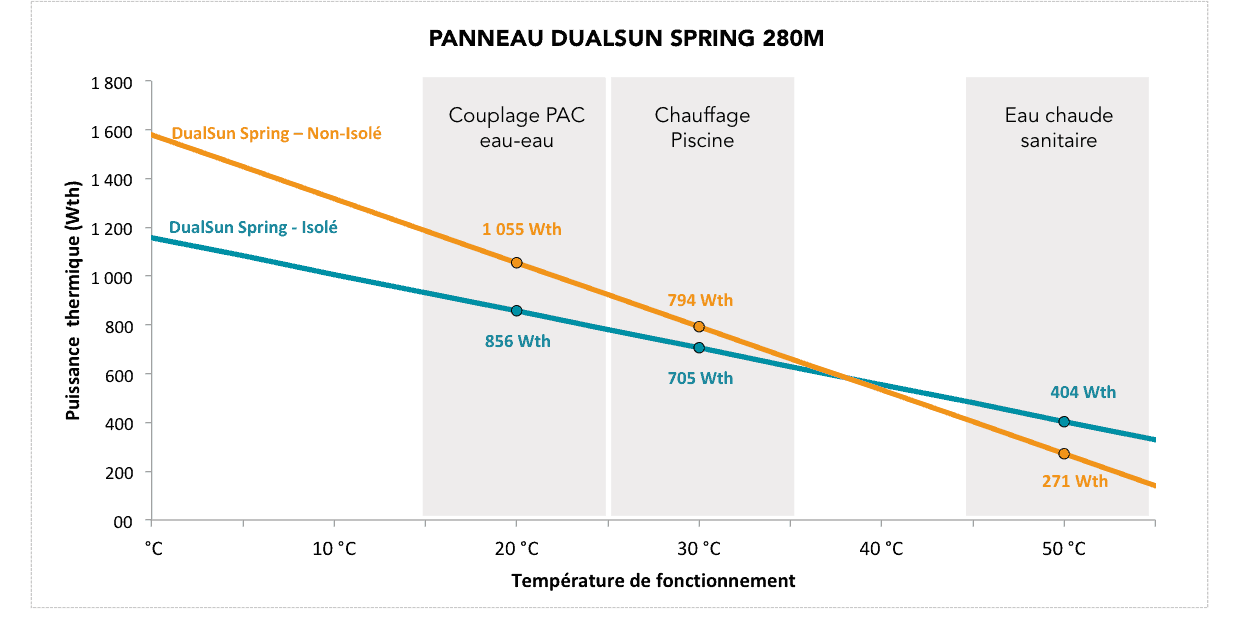What is the difference in thermal power between the WAVE and the SPRING?
The thermal outputs of the hybrid PV/T panels can be compared using the coefficients a0 and a1 which are given on the data sheets. The graphs below show the thermal power of our SPRING and WAVE panels as a function of their operating temperature:
At low temperatures (for water-water coupling and swimming pool heat pumps), we recommend using the non-isolated version of our panels. For domestic hot water, we recommend using the insulated version.
As you can see, the thermal performance of the SPRING and WAVE panels is very close:
In pool heating, the performance of the uninsulated WAVE panel is slightly better than that of the uninsulated SPRING panel. However, the SPRING panels, thanks to their polymer heat exchanger and the fact that they are self-draining, are compatible with pool water, which is not the case with the WAVE panel. This makes it possible to improve the efficiency of pool installations because there is no need for an intermediate heat exchanger and thus the SPRING panel is more efficient in pool heating than the WAVE panel.
For domestic hot water, the thermal performance of the insulated SPRING panel is better than that of the insulated WAVE panel.


